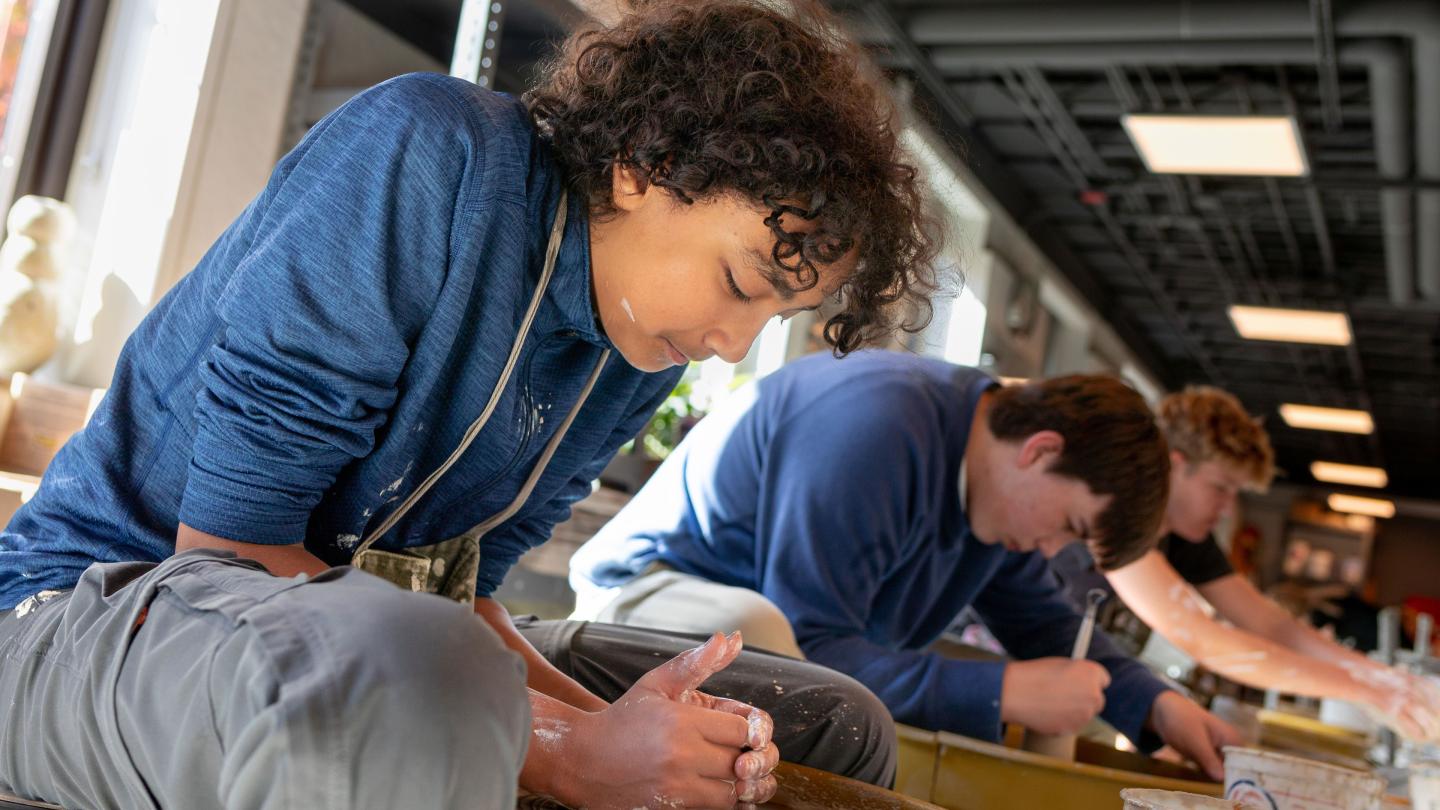After spending a year abroad, Ceramics Teacher Becky Soderberg ’94 returns to St. Paul’s with fresh techniques, bold ideas and a renewed passion she’s excited to share with her students.


The Fine Arts Program is studio-based, with hands-on studio assignments supplemented by a broad introduction to art history, theory, criticism and aesthetics, and with students expected to display their work as one outcome of each course.
All students are offered extensive elective opportunities in one of three major areas: drawing, painting and printmaking; sculpture, glass and ceramics; and photography and computer graphics. Advanced Portfolio courses are offered as culminating classes in each of these three major areas of study.
The program also offers courses in architecture and art history, and students may also choose to study across a variety of studio arts disciplines. We encourage every student to explore courses in the various two- and three-dimensional studios. Our curriculum is designed to meet the needs of both the novice and advanced artists.
Students in this course learn to use scanning, drawing tablets, the digital camera and various software to create art using computers. Creativity and experimentation are emphasized. Students output their work in a variety of digital media, including large archival inkjet prints.
Ceramics I is a beginning course that focuses on the exploration and development of fundamental ceramic processes. Through hand-built and wheel-thrown projects, students design and create various ceramics artworks ranging from utilitarian items to sculptural works. In handbuilding, the focus is on pinch, coil and slab methods. In throwing, primary forms are explored. Basic glazing and firing techniques also are presented. Historical and contemporary examples, aesthetics and 3D design principles will be highlighted through demonstrations, lectures and tutorials. Emphasis is placed on understanding the fundamental aspects of three-dimensional form, including shape, texture and color to create original and expressive pieces.
Glass I is a beginning course for students who want to work with glass as a sculptural medium. Students will be introduced to hot glass, glass fusing, glass casting and stained glass construction. Projects will focus on the three-dimensional elements and principles of art and design, while historical and contemporary examples of glass are studied. Students will learn how to manipulate hot glass, cut and grind glass, solder and create plaster molds. The course provides the opportunity for students to explore possibilities of glass in the studio and hot shop.
The printmaking courses 1-3 introduce students to various printmaking methods and media in a fast-paced, collaborative studio. With a heavy focus on experimentation, originality and message, students explore multiplicity, image reversal, design principles, color and mark-making through both hand-printed and press-printed techniques. Students develop technical ability and aesthetic skills through instruction in relief printing, embossing, intaglio, monotype, bookmaking, screen printing, Riso duplication and Xerox. This studio course delves into the rich, democratic history of print media by discussing its roots in publishing and politically engaged and public artworks, and continuing into contemporary print cultures and industrial applications. No drawing experience necessary.
Sculpture I is a beginning course for students who want to explore and work in three-dimensional art forms. Students will be introduced to the 3-D elements and principles of art and design. Students will consider how materials, processes and ideas can be used to make work that involves space and form. The class format will include image presentations and demonstrations of techniques such as welding, casting, modeling and carving. Class lectures will incorporate historical and contemporary examples. Class projects will allow students to practice technique while developing a personal approach to material and process. Emphasis is placed on skill development, experimentation, creative thinking and quality craftsmanship.
After spending a year abroad, Ceramics Teacher Becky Soderberg ’94 returns to St. Paul’s with fresh techniques, bold ideas and a renewed passion she’s excited to share with her students.
Designed as a teaching gallery, the Crumpacker Gallery provides exhibition opportunities to students and faculty and hosts visiting artists throughout the year.